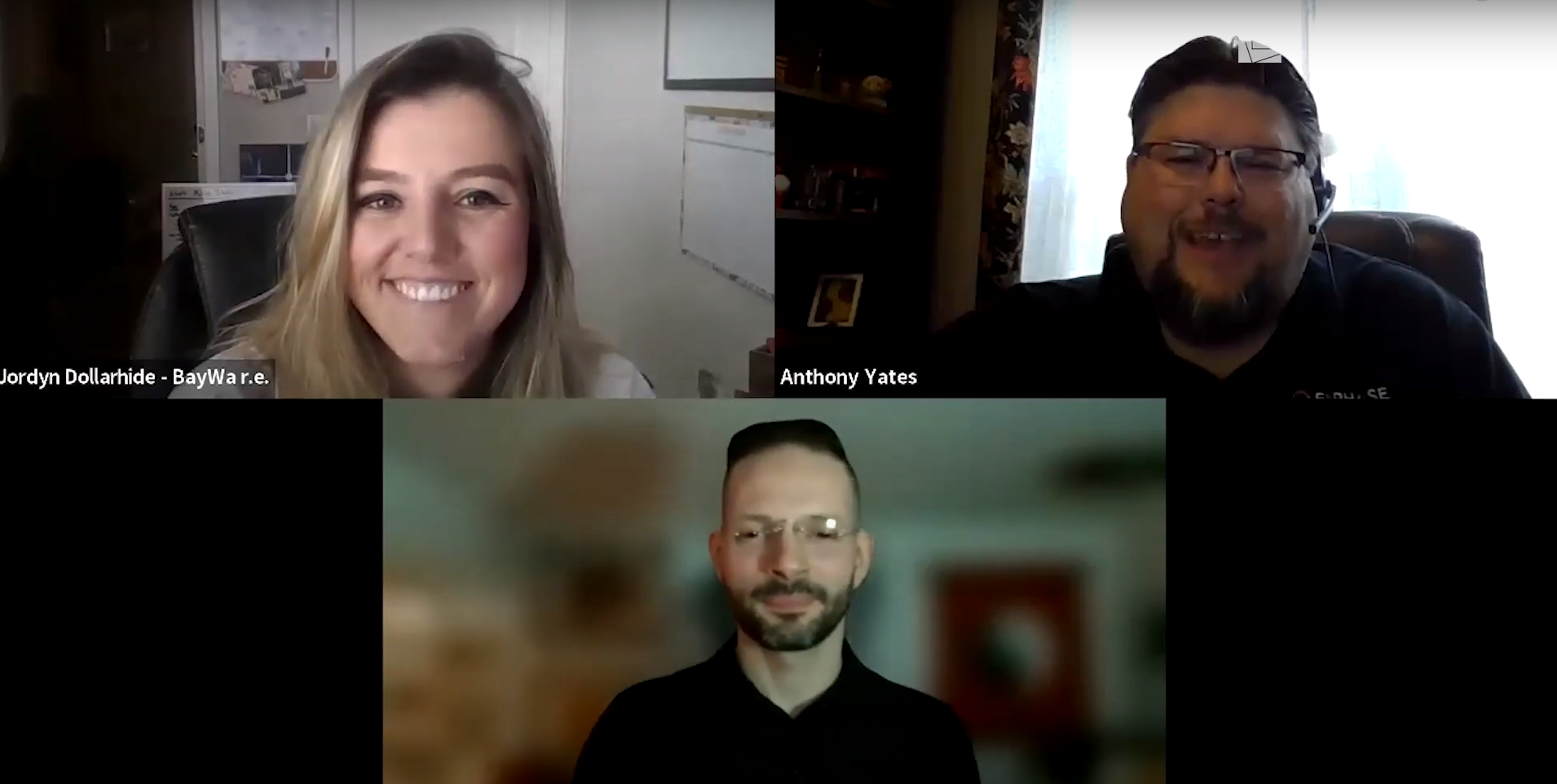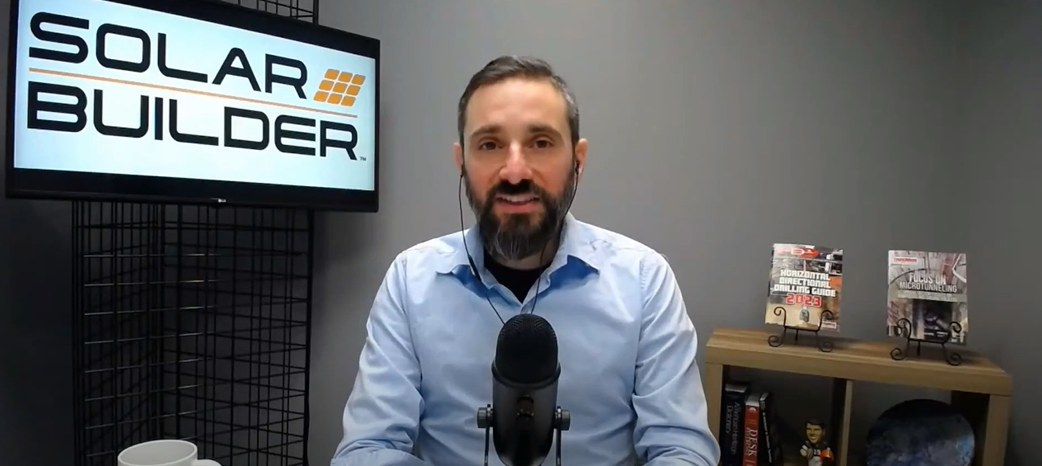
Understanding ‘People Experience’
For those of you getting to know BayWa r.e. Solar Systems for the first time, welcome! One company value we take pride in is our emphasis on health — business health for sure, but especially personal health. This is my main responsibility for our company, thinking about the People Experience (PX) for our team members.
Think of PX as taking human resources (HR) policies to an even more empathetic, contextual level. For example, an HR policy might simply determine whether or not employees should work remotely. But, PX policies look at how each employee can best work remotely and be supported in management expectations and to everyone’s overall satisfaction — as well as physical and mental health. Healthy teams make for healthy companies, after all.
Take a moment to consider how your company’s existing HR policies can be enhanced with a PX perspective.
Four PX Pillars for Remote Workforce Management
During this COVID-19 pandemic, BayWa r.e. Solar Systems has a temporary policy that all employees work remotely. But we knew that teleworking isn’t just about plopping everyone onto Zoom and expecting seamless continuity and productivity. We’ve been activating four pillars of PX best practices and reminding all team members — from our CEO Boaz Soifer in Santa Fe out to all employees across the continent — to be mindful of them in our day-to-day interactions with each other and our customers and partners.
These four PX pillars are:
1. Communicate Intentionally
With Zoom, Slack, and other communications tools, it may feel like we’ve solved the physical distance that remote work has presented. But Zoom meetings can be exhausting in their own way — and constantly asking someone to react virtually can be just as distracting as constantly dropping by their office desk all day. So, we need to ask first whether a meeting is necessary to begin with. And when we hold that meeting, we have to be present and hold ourselves to set Agreements.
Identify desired outcomes and an agenda for online meetings
Set the who, a what, and a when for your Agreements
For example: The easiest way to squash productivity in a remote meeting is to have people simultaneously checking email or otherwise distracted. Everyone has so much work to do that it takes diligence to be present. At the beginning of your meeting, set an Agreement for the group that they will be present during the call. If there is a more urgent matter that someone needs to address that will be distracting to them, then they should excuse themselves from the call.
2. Create Space for Engagement
We talked a lot about how to communicate and what tools to use, but of course the biggest adjustment to teleworking is understanding our psychology. Working from home can be isolating, so we need to learn how to be intentional about engaging with one another. Building interpersonal connections helps us to remember that we are working with other humans and it makes work more fun — keeping our team members grounded and remembering that we are all in this together.
Managing apps and platforms - what tools are best for the task?
We also use Microsoft Teams, but mainly reserved that for small group calls. We also use the chat and calling functions with our sister companies in the BayWa r.e. global family.
Provide guidelines for your team to lead clear discussions and voice opinions
SET statements are a big part of our culture, helping us address any disagreements or misunderstandings that come up directly and efficiently. We also teach a decision-making guideline like FAARD (facts, assumptions, advice, recommendation, decision) — everyone in the company understands this format for assessing a matter of business, allowing team members from across titles and tasks in our company to effectively gather input and arrive at an outcome.
3. Be Clear About Your Tools
At BayWa r.e. Solar Systems, we use a lot of different software tools to communicate and each has a purpose. Email remains critical, but we are careful about when to email because there’s a sweet spot for engaging a colleague by email: a quick note can get lost in someone’s inbox, and something too long isn’t going to get read. To fill these other needs, we use additional platforms.
Include one-on-one check-ins between employees and their manager
Create opportunities for team-bonding and camaraderie
We’ve also instituted daily town hall meetings (not to be confused with our weekly #SolarTownHall for the broader solar community): these are optional video calls for the whole company to spend 30 minutes together. We see how people are doing, share our stories, laugh, or listen to Preston play the guitar. We even host a weekly yoga class (thanks, Alyx!) via Zoom.
Customize an engagement plan that's right for you
4. Set Boundaries
One benefit of working from home is that you no longer have a commute. One drawback of working from home is that you don’t have any physical distance to separate you from your work. It’s really easy to fall in the trap of “just getting one more thing done” whether it’s after dinner, on a Saturday, or right before bed. The lack of distinction between the workplace and the home can lead to burnout if you don’t set boundaries for yourself. It’s also easy to fall into the trap of overloading yourself and coworkers with meetings. When you are in meetings all day, it leaves little time to actually get the work done.
Setting healthy boundaries
Managing those boundaries
Continuous Improvement and Learning
One of our People Experience (PX) policies is that all employees are allowed to work remotely which about 60% of our employees do. We utilize coworking space in Oakland, CA and Austin, TX along with our headquarters in Santa Fe, NM—and even those employees that do choose to frequent an office, they have the option to work from home throughout the week as well. Since we have a majority remote workforce, moving our entire team to remote work has not been a stress on our business.
That said, we haven’t always been great at it. When I started at the company, more than five years ago, I was the first employee to work remotely full-time. It’s crazy to think about how much we have learned in the past five years. To give an example, my onboarding in the Santa Fe office lasted three months, which meant I temporarily moved to Santa Fe to get up to speed. Fast forward to this last quarter—we did our first fully remote onboarding and it went great!
But the best practices we’ve developed over the last six years has prepared us well for the physical distance challenges posed by this pandemic, being able to run our business just as efficiently as when we had an office full of people.
If you take anything away from this article, it’s to remember that we are all humans and it’s essential to create space for humans to interact — even if they are not in the same physical location. My belief is that our greatest success in having a remote workforce has been in our ability to create community for our employees. I hope our tips can help you build a welcoming, engaged sense of community for your company!
Additional Reading
The Six Golden Rules of Transition Management
Whether it’s changing your ERP system, or revamping your leadership team, these six rules will help keep your transitions on track.
Viral Vocabulary
Transmitting Culture Through Common Language






